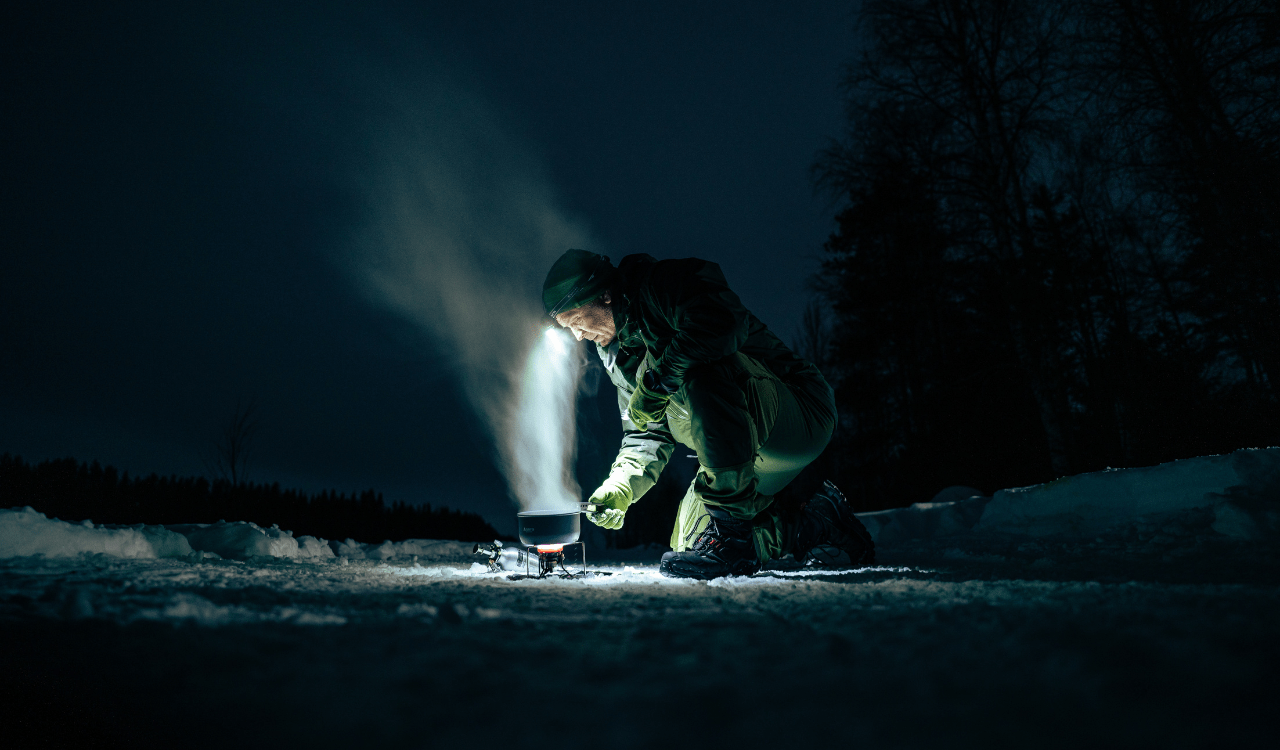
The Arctic Survival Guide
From the old-growth forests of Scandinavia or the stark glacial valleys of North America, adventurers have always been drawn to the northern territories. There’s a lure in all that remoteness, snowfall, and spectacular night skies lit by the aurora borealis. But the biggest draw of all is the scope; the area north of the Arctic Circle covers around 20,000,000km² of land and sea, much of it pristine. With its contrasts of extreme hostility and natural beauty, it’s no surprise that the Arctic region has become a highlight of the ultra-endurance event calendar.
The Arctic Ultras are a challenge even for seasoned endurance racers. Operating in these environments requires a very specific set of skills, and often years of preparation. We consulted three experts – Robert Polhammer, race organiser of the Montane Lapland and Yukon Arctic Ultras; Hannah McKeand, a world record-holding polar explorer with over two decades of experience; and seasoned Arctic expedition organiser, Ian McClelland – to get the lowdown on the basics of preparing for an Arctic Ultra.
1. Have a system for everything – Operating in these environments takes diligence and attention to detail. A tiny problem can become a big issue fast, so be systematic and innovative. When you pack, know exactly which bag your kit goes into. Make sure you can operate all your gear with gloves on. Go to the bathroom before you go to bed rather than during the night when the temperature will drop again considerably. Keep your head outside your sleeping bag at night, as your breath will turn to ice.
2. Stay hydrated – Carry as much water as possible. Invest in insulated water reservoirs and keep them close to your body to prevent freezing. What you can’t carry you can source from the environment around you, but be aware that melting snow is a slow process, so pick ice over snow if you can.
3. Beware of hypothermia – Don’t underestimate the threat of frostbite and hypothermia. Take care to look out for early warning signs (numb, whitened skin, throbbing, or pins and needles). If you wait until you’re cold to act, it’ll be too late. Wear an extra layer, rest, build a fire, and have a hot meal or a hot drink.
4. Prevent overheating – As important as it is to keep warm, be aware that overheating can be dangerous too. Not only that, but if you sweat through your layers, there’s a risk that the damp in your clothes will freeze.

5. Invest in good kit – In extreme environments, top-quality equipment has the potential to make or break your trip. Plenty of cold-weather races have mandatory kit lists, which give a clear breakdown of everything you could need. Don’t buy mediocre gear, and ensure that what you have is in top condition before you set out.
6. Forewarned is forearmed – Anticipate worst-case scenarios and have a plan in place for each. Carry fire-starting essentials such as waterproof matches or stormproof lighters, and know how to build a wood fire efficiently. Pack a change of clothes in case you get wet and carry more food than you need — the chances are you’ll be far from help if there’s an emergency.
7. Rest when you can – Getting enough rest is crucial for maintaining peak performance and reduces the risk of errors in judgement. Invest in a high-quality sleeping bag with a Vapour Barrier Liner to retain heat effectively. Pack a proper pillow even if it means carrying extra weight.
8. Eat well – You could need as much as 5,000 calories per day. Make sure you pack snacks that you can eat on the go; you will not always want to stop for a proper meal. Avoid too much sugar, which could result in an energy crash, don’t take snacks which could freeze, and avoid too many bars or gels which can be hard on the stomach. It’s also important to trial the food you’re carrying while you train.
9. Consider a course – As part of your preparation, it’s a good idea to book onto a course which will help you to master basic Arctic survival skills. Some of the best include Hannah McKeand’s Polar Expedition Training, Rimfrost Adventures’ Arctic Winter Skills, and Newland Adventure’s Winter Training (the latter trialled by our founder last year). There’s no replacement for practical experience, and these courses will help you gain some confidence in cold weather environments before you go it alone.

Image credits: Swedish Lapland, courtesy of the Montane Lapland Arctic Ultra
First published: 7th March 2024

